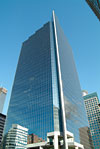
Green, sustainable, and high performance practices can be employed at both the residential and commercial levels of contracting.
Step aside green and make room for sustainable. Although arguably much the same, these two terms are jockeying for a prominent place in the HVACR contractor’s approach to the design, installation, and repair of HVAC systems as a whole. The resulting terminology war is launching another term into the green theater - high performance.
Despite the term used, many HVACR contractors are questioning what all these terms mean in general and more specifically what they mean for their businesses and customers.
BREAKING DOWN GREEN
The green movement is not new. Environmentalists, lobbyists, and goods manufacturers have pushed the benefits of green for years, but as the green term gained traction and momentum within pop culture, a greenwashing trend emerged, leaving contractors and consumers with an unclear expectation of green products.Enter sustainable. This term has become more popular as increased efforts to further define truly green practices and principles continue. Not content with simply calling a product green or relying strictly on equipment upgrades, challenges were issued by many groups for building owners and operators to move beyond greenwashing to sustainable thinking.
The Environmental Protection Agency (EPA) was one such group. Understanding that buildings ac- counted for nearly 40 percent of U.S. energy use, the EPA created and released an overall strategy for green buildings that focused on the facilitation of mainstream adoption of effective green building practices. Its two-fold strategy is to strengthen the foundations of green building and raise public awareness of building related im- pacts and opportunities. With those goals in mind, how does the EPA define green building?
“Green building is the practice of maximizing the efficiency with which buildings and their sites use resources - energy, water, and materials - while minimizing building impacts on human health and the environment, throughout the complete building life cycle - from siting, design, and construction to operation, renovation, and reuse.”
Jerry Yudelson, a civil and environmental engineer and past chair of the U.S. Green Building Council’s (USGBC’s) annual conference, Greenbuild, further matches sustainable with the term design and points out, “Sustainable design considers the big picture: the need to transform global settlement and industrial patterns to be healthier and less wasteful, less impactful on the natural environment. It brings these concerns down to the scale of each building, each site plan, each choice of materials and processes.”

The
definitions being used to delineate green and sustainable building concepts are
giving rise to a stronger term - high performance.
HIGH PERFORMANCE EMERGES
The definitions being used to delineate green and sustainable concepts is giving rise to a stronger term - high performance. When green reigned, installing more efficient equipment seemed to be the answer for contractors looking to be environmentally conscious and customer friendly. As sustainability surfaced, choosing better equipment was merely the beginning. How the equipment was made, where it was installed, and how long it lasted, among many other concerns, became the centerpieces of ideology that moved from green equipment to sustainable thought processes. Combing green equipment and sustainable ideology arguably produced a high performance building goal that many forward thinking contractors and architects are beginning to work toward.Walter Mott, owner of Dean’s Shop in Staples, Texas, for example, is taking on environmental projects both for the customer and within his offices. For the customer, this residential and commercial contractor is not only installing high efficiency equipment, but he is also testing the ductwork for proper airflow, ensuring that it is sealed against air leakage. These practices may sound like standard operating procedures for any contractor, but the fact remains that there are many contractors who emphasize efficiency ratings, but don’t always concern themselves with performance.
Mott’s environmental responsibility, however, doesn’t stop with his customers. “Among other things, at our office, we recycle paper, all of the old equipment, and all our reclaimed refrigerant,” he said. “In my opinion, this is the only way to operate. We always have and we always will.”
HOME RUNS AREN'T REQUIRED
Green, sustainable, and high performance practices can be employed at both the residential and commercial levels of contracting. Some groups argue that being successful in these areas requires perfection in environmental usage and balance. Ken Field, owner of Field’s Service Inc. in Easton, Pa., thinks that aiming for environmental perfection is not necessary and actually may be a hindrance in overall energy savings; especially in the residential arena. He is concerned that too much emphasis is being placed on net zero energy homes and buildings.“The chance that a zero energy home is right for even 2 percent of U.S. homeowners is a stretch of the imagination,” he said. “Instead, we should trim the wasted 30 to 40 percent off of new homes being improperly constructed. The building codes do not address most energy flaws we see daily and, in fact, they often legitimize the use of poor, outdated practices and materials.”
Field compared his concept to a baseball game and pointed out that most games are not won with home runs. “They may be more dramatic when home runs win the game, but singles and doubles will win more games more consistently. It’s OK to be an energy MVP who hits singles and doubles all day long and occasionally knocks one out of the park.”
CHOOSE YOUR OWN ADVENTURE
A high performance building is not just a structure with highly efficient HVAC equipment that is sized, installed, and maintained correctly; it is a conglomeration of green equipment and sustainable practices that provide an environmental and occupant friendly structure that continues to perform at exemplary environmental standards. High efficiency HVAC equipment installed and maintained correctly is the HVACR technician’s contribution to that high performance, environmental success. At what level a contractor chooses to participate is up to each individual contractor.Publication date: 02/28/2011







